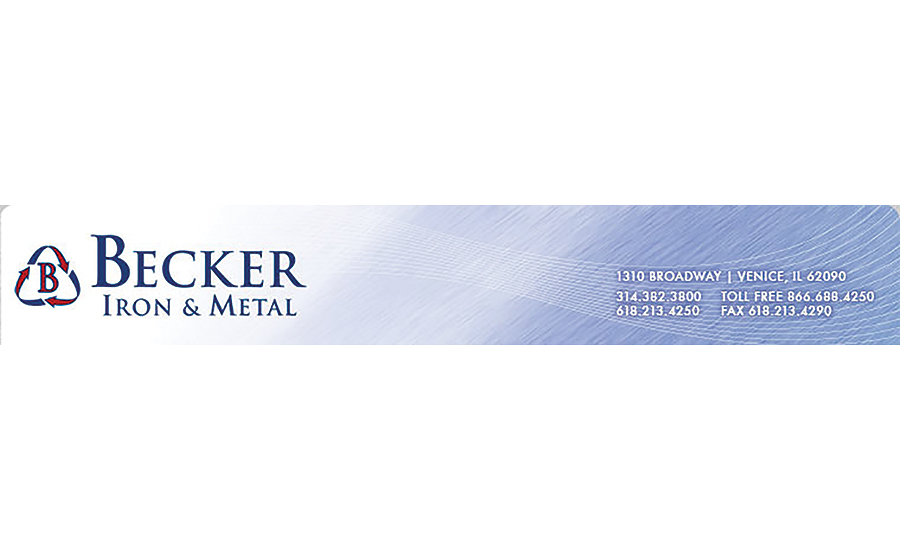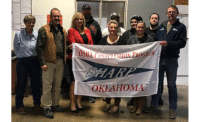Becker Iron & Metal, of Franklin Park, Illinois, reached out to Illinois OSHA in 2011 for its first consultation visit. Like many other small businesses, Becker hoped to improve its safety programs and foster a partnership with an expert to evaluate current conditions without the fear of repercussion. OSHA’s free and, most importantly, confidential consultation program proved to be the answer to Becker’s problems.
As buyers and processors of ferrous and nonferrous metals, Becker Iron & Metal, Inc. is a family-owned fourth generation company servicing the scrap metal industry for more than 100 years. The company seeks to be a premier scrap metal recycling organization through its focus on customer service, quality control, environmental stewardship, and health and safety programs.
Ferrous and nonferrous metals are collected from a variety of sources, including industrial scrap, obsolete scrap (inventory liquidation, maintenance scrap, obsolete equipment, and any other scrap generated due to replacement or attrition), demolition/construction, and other sources. Becker Iron & Metal serves a diverse customer base, from the largest industrial manufacturing plant to the smallest machine shop, from Fortune 500 companies to the individual.
Insufficient or non-existent
When the consultation program began working with the company in 2011, the current DART rate was 2.3 and the current TRCR was 2.3. Within two years, the employer’s yearly injury and illness rates were down to zero.
The hazards noted during the consultation included:
- insufficient or non-existent safety and health programs (hearing conservation, respiratory protection, PPE);
- overexposure to metal fumes;
- damaged electrical cords;
- unmarked aisles;
- improper storage of compressed gas cylinders;
- forklift emitting high levels of carbon monoxide; and
- improper labeling of hazardous chemicals.
The road to zero
Following the consultation, Becker had a better understanding as to what steps were necessary to address the existing issues. After having consultants conduct personal air monitoring on employees, Becker Iron and Metal purchased new equipment for cutting scrap to reduce exposures to metal fumes and implemented a comprehensive respiratory protection program. Also, after personal noise monitoring conducted by on-site consultation, the employer implemented a fully compliant hearing conservation program for those employees exposed to levels above 85 dba.
Electrical hazards and improper equipment were abated immediately during the consultation visits and/or taken out of service until proper equipment could be put in place. In order to reduce amputations and electrical hazards, the company purchased a new bailer for the warehouse. A new lockout-tagout program was implemented and subsequent training provided. As part of the safety and health management program, the company instituted a “Lockout/Clockout” program whereby any employee who doesn’t lockout the equipment is immediately told to clockout and held accountable.
Developing a management system
Through working with the consultation program, Becker learned about SHARP status. To recognize businesses that exceed in their commitment to health and safety in the workplace, OSHA’s Office of Small Business Assistance (OSBA) highlights businesses with Safety and Health Achievement Recognition Program (SHARP) status.
This program was used as a goal to drive the overall development of the safety and health management program. Management took the opportunity of utilizing the program to identify the milestones needed to improve the overall program and gave the safety manager the authority and resources to ensure they were attainable.
Changing a culture of fear
After the initial on-site consultation visit, leadership at Becker sought to take a more proactive stance in their occupational safety and health process. They endeavored to make “near accident reporting” the cornerstone for improving their overall performance. Overcoming employee reluctance to do so was a major hurdle. Employees were afraid that in certain instances reporting near accidents/incidents might compromise their welfare or that of their co-workers. Changing this culture of employee fear involved Becker completely eliminating possible discipline when employees voluntarily reported near/potential accident situations.
Undergoing such significant changes often causes a bit of an internal shock. Testimonials from employees of Becker prove that their partnership with Illinois OSHA and specifically SHARP was advantageous for all involved.
Said one Becker employee: “The On-Site Consultation Program has provided me with knowledge on so many safety and compliance issues because our consultants were knowledgeable and willing to teach. Most importantly, I feel as if I gained a support system of experts that were only a phone call or email away if there were ever any questions I had.”
Achieving SHARP status distinguishes businesses among their peers as a model for workplace safety and health. This achievement also has a number of tangible benefits, including a culture and reputation that attract high quality workers and financial incentives such as lower workers’ compensation premiums.
If you’re a company located in the state of Illinois, to request a consultation go to OSHA.illinois.gov. For information about federal OSHA’s on-site consultation service, go to: www.osha.gov/dcsp/smallbusiness/program_info.html
For information about the national OSHA SHARP program, go to: www.osha.gov/dcsp/smallbusiness/sharp.html
Thanks to Leili M.J. Doerr, Public Information Officer/Spokesperson, Illinois Department of Labor, for compiling the information used in this case study. ISHN will feature more case studies from the Illinois OSHA SHARP program in future issues.



